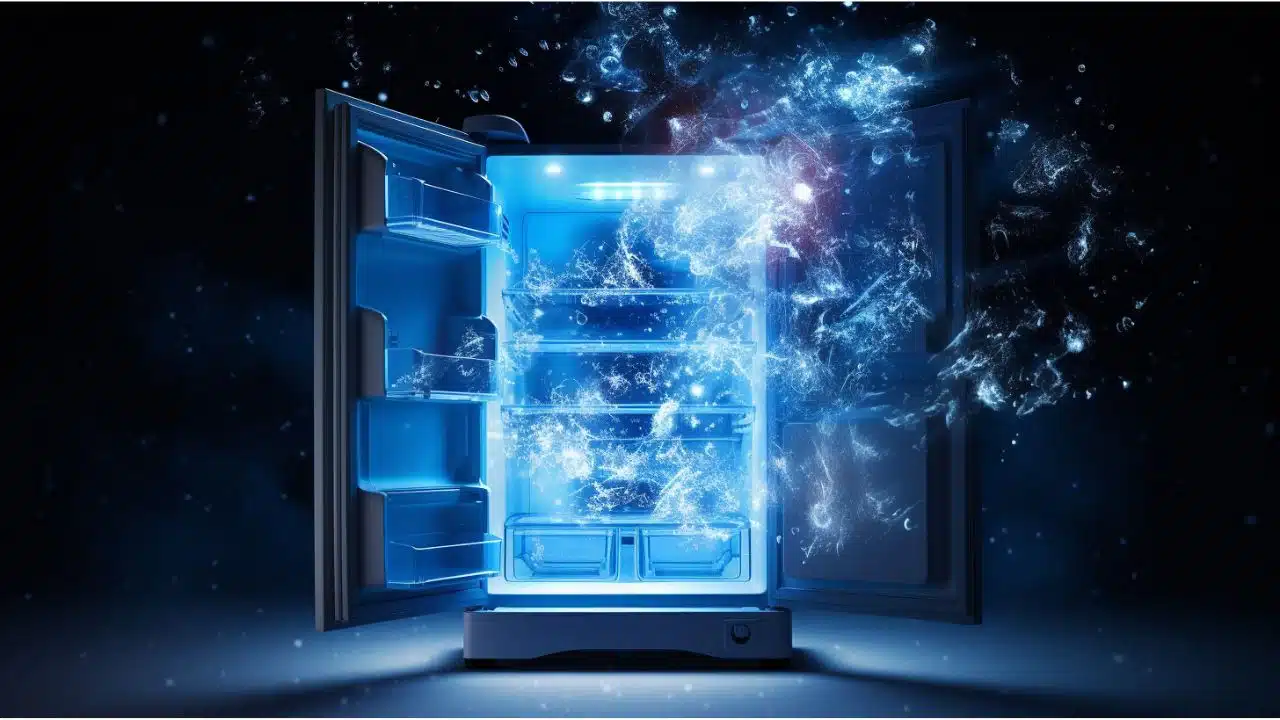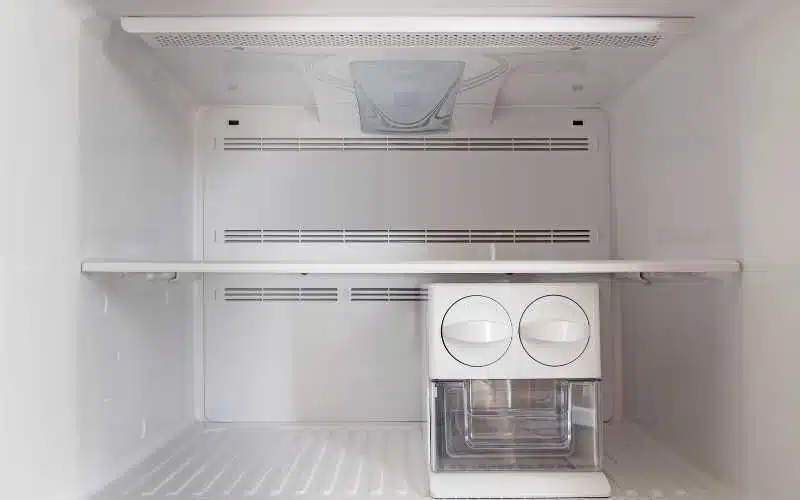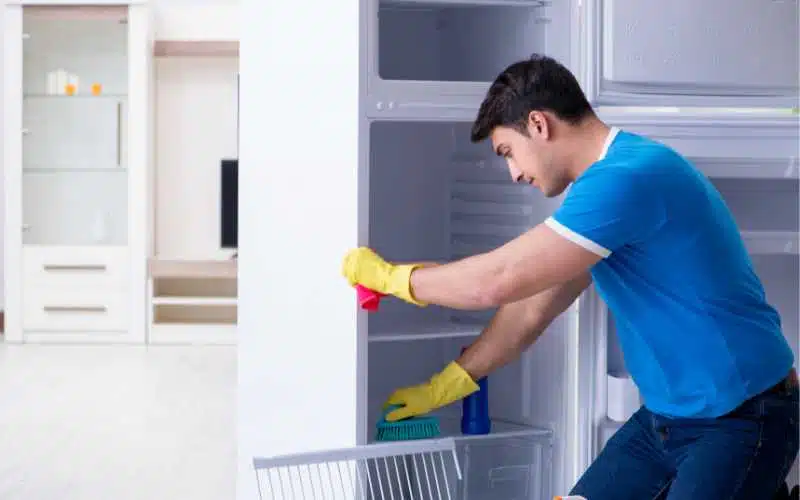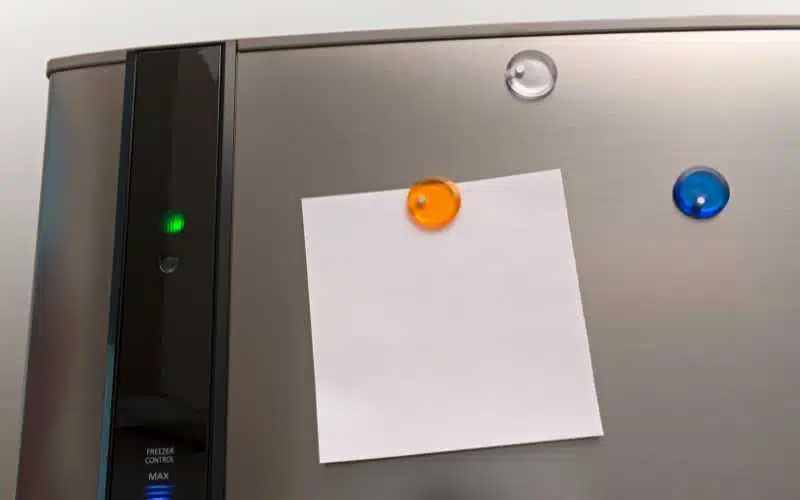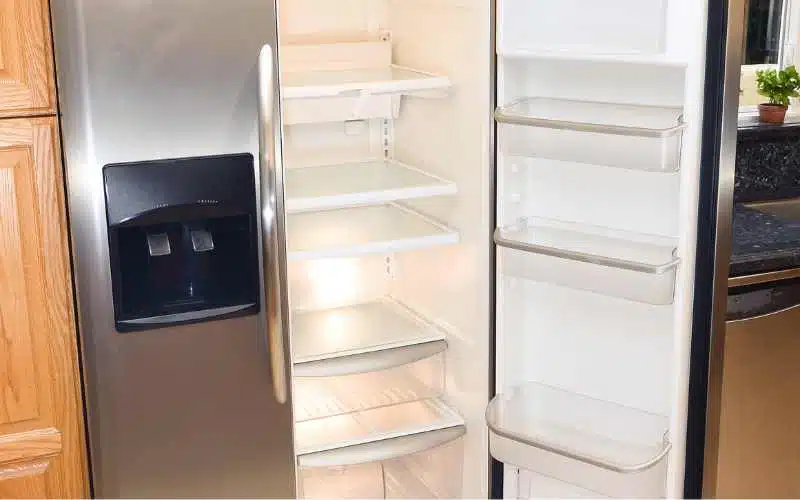Is your refrigerator blowing hot air? It may be high time you got a new one, or it might be a minor fault.
Most times, household appliances like refrigerators, ovens, and air conditioners are not something to be easily tossed away like your everyday waste.
These refrigerators contain a refrigerant known as freon.
Freon is an essential part of your refrigerators and cars as it is majorly used for cooling or refrigeration.
You should know that freon is a mixture of fluids that have a significant role in transferring heat in our appliances and, thereby, running these appliances successfully.
Removing freon from your fridge costs about $100 to $300, but this depends on the handyman handling it for you. However, it would be best never to attempt to remove freon from your refrigerator unless you’re a section 608 certified technician as a homeowner. This is because choosing to remove the freon yourself is very risky.
How Much Does It Cost To Remove Freon?
Removing freon from either your refrigerators, air conditioners, or oven depends on the person handling the job—the cost to remove these substances ranges from $100 to $300.
Even if you decide to get the job done by a non-certified technician, they would still need to work with certified pieces of equipment, so the cost should be anywhere from zero; for a junk dealer unit; or as high as $100.
Just like the freon in your refrigerator, the freon in cars also helps regulate the temperature rate in the cabins of your cars.
Removing the freon from your cars would cost about $65 to $100, and you also shouldn’t be doing this yourself except if you’re a certified technician.
We should all know that removing freon from our refrigerators is quite tasking for it to be that expensive.
Homeowners are not allowed to do this all by themselves except if they have been certified to do this because the gases released during removal are incredibly harmful to the environment if not done carefully.
You will face a heavy penalty if you are caught trying to cut these freon pipes, and allow the gas to leak out to the atmosphere.
Nevertheless, letting a professional do this for you can be very costly, and you might be able to do it all by yourself.
Therefore, we will be guiding you on how to go on with this, so you do it the right way.
How To Remove Freon From Your Refrigerators Safely?
It would help if you first considered setting up your recovery system, as this process involves a lot of time and strategizing.
You can’t just decide to cut the tubes that allow the freon gas to leak out without planning, as there are strict laws guiding taking freon out of your refrigerator.
You need to set it up wisely and strictly on paper before putting it down to action.
Draw your refrigerator and draft out the critical pathways that connect with the freon.
After this has been done, click the paths using a red line to the sight glass through the yellow tube and the blue line, then down to the recovery system.
It would be best if you now connected the yellow pipe to the recovery cylinder. Afterward, the recovery cylinder is to be connected to the recovery system.
Now you have successfully set up your recovery system, you should make sure that you hoover the recovery cylinder.
The recovery cylinder is another essential part of the setup, therefore, you should ensure that it is well set up to yield maximum effectiveness.
If you discover that the recovery system in the structure is empty, you should hoover it out, and this process, it can be done in two ways.
Either you use your recovery unit or use the vacuum pump through the gauges. Most people prefer using the second option because it is more effective and stress-free.
Now you would have to equally distribute the pressure on both the opening valves of the recovery cylinder and the disabled units.
Doing this would allow the gas to enter the cylinder, which will only stop when the whole setup has attained equilibrium in pressure.
You can now start up your recovery process with all these being done. It would be best if you didn’t do this until the pressure on both sides is now balanced.
The recovery unit’s principal use is to collect vapor from the recovery cylinder and then apply pressure so that the vapor goes into the refrigerator.
So it would help if you opened the recovery unit valves.
The recovery process is the final major step, and you should ensure that it is monitored closely.
Since you will be dealing with gas, you usually would not be able to determine when the whole process comes to an end; that’s where the sight glass comes in.
The sight glass is used to help you decide whether the process is still going on or if it has ended.
The sight glass would help you see the movement of these freons, and once you stop seeing them, that signifies that the process of recovery has ended.
When you are done with removing regions from the fridge, you end the recovery process by dismantling the system. You can do this by shutting the valves in the recovery unit.
Now you can see, it is not so hard for you to do if you are careful enough, now with this, if you do it yourself, you can actually save some money.
Should You Remove Freons From A Refrigerator?
Yes, it is a good thing for you to remove these freons from your refrigerators, but you shouldn’t do it yourself if you are not a certified technician.
According to the EPA, you should not remove freons from your refrigerator all by yourself unless you are a certified technician. Even if you know without being certified, it is a risky thing to do.
You should hire a technician with a certificate because the EPA does not want any freon to escape into the atmosphere.
If you are caught trying to do this by yourself, you will be charged a whooping sum of $25,000, and come to think of it, wouldn’t it be better to hire a technician and pay just $100?
If you decide just to get rid of the refrigerator, you may be able to hire a dumpster to remove the appliance from your home.
You should note that most haulers can also remove freons from your refrigerators, so if you want to go for a more economical option, you should consider just getting rid of the freon.
There are a lot of avenues where you can dispose of your applications with freons; you should consider picking the option that is more convenient for you based on your budget, location, and what you are throwing away.
The first option is the bulk waste or bulk service programs. In this program, you can have your appliance picked up from your home, but you should note that the price varies.
In addition, many of them may require that you have a certified freon technician get rid of it from your refrigerator before it is picked up.
The next on the list is the responsible appliance disposal program partner; also referred to as the RAD Partner can also pick up your appliance directly from your home.
For more information, you should visit sites that would assist you in finding a program that is suitable for you in your state.
Apart from these two mentioned, you can also opt for the nonprofit or retail stores organizations. These two organizations are not far from each other in performance.
In the profit organizations, you may be able to give out your appliance to nonprofit organizations like a salvation army and habitat for humanity.
The retail stores are similar to the nonprofit organizations, but in this case, you can also choose to donate your appliance if you get a new one from them.
Conclusion
At this point, you should all know that freons are harmful and should not be ejected into the environment, so getting rid of them should be a priority.
A certified freon technician can remove Freons from your refrigerators, so you do not necessarily need to throw away your appliance.
You can give your refrigerator away to a nonprofit organization if you choose to.
